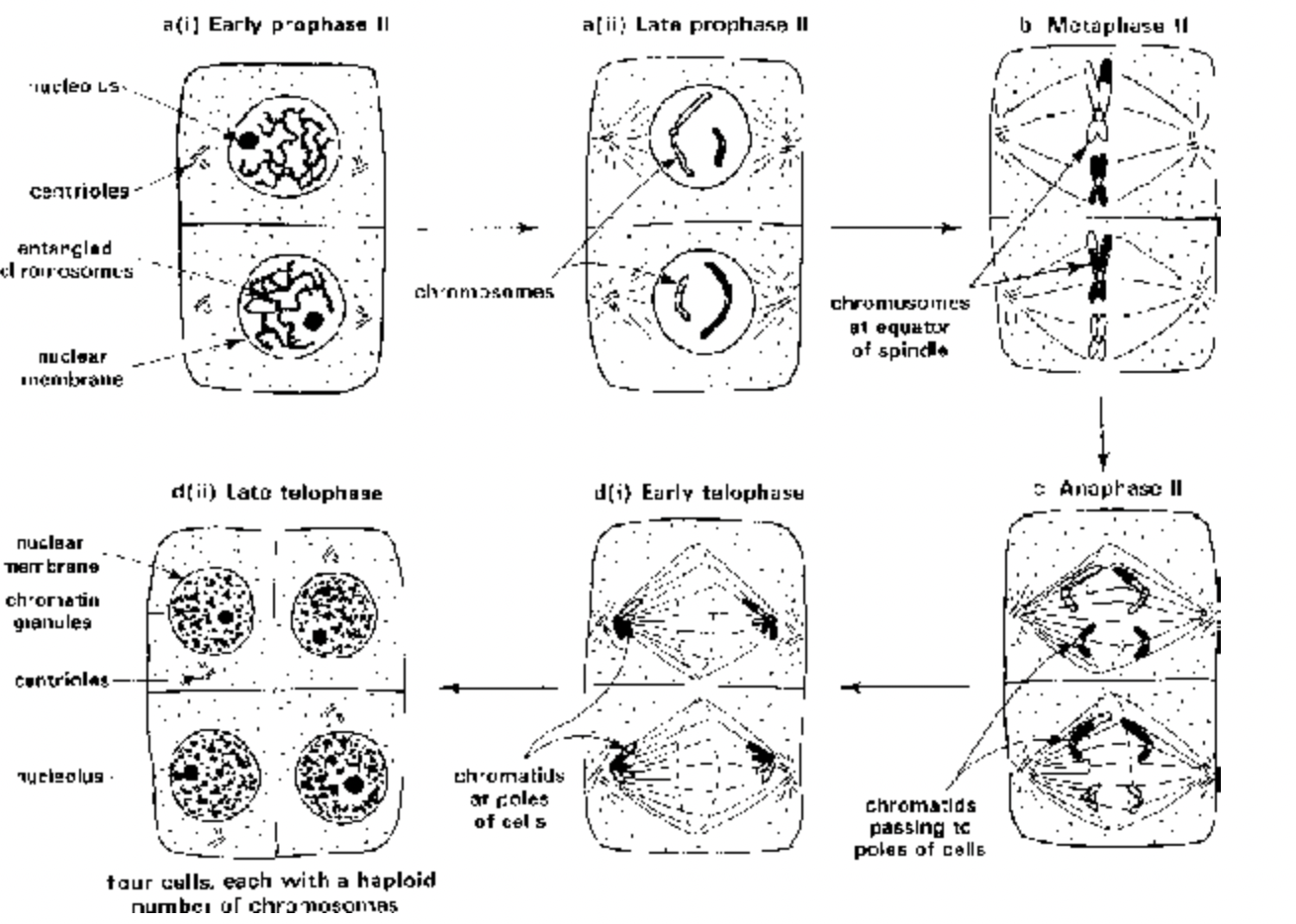Significance of Meiosis - I
Cell cycle of Class 11
1. Reduces chromosome number to half for sexual reproduction.
2. Crossing over leads to variations.
3. Random distribution of paternal and maternal chromosomes (independent assortment) leads to variations.
4. Disturbance in disjunction causes genomatic mutations.
5. Formation of spores/gametes is induced.
Meiosis - II:
Shorter than typical mitotic division because of shortening of prophase of this division.

Fig. Stages of second meiotic division
Meiosis II is similar to Mitosis but Meiosis II is not Mitosis because:
(i) It always occurs in haploid cells
(ii) It is not preceded by interphase.
(iii) The two chromatids of a chromosome are often dissimilar.
(iv) The daughter cells formed after meiosis II are neither similar to each other nor similar to the parent cell.
Main function of homotypic division or meiosis II is to separate the chromatids of univalent chromosomes which differ from each other in their linkage groups due to crossing over.
Interphase is absent, state of nucleus having elongated chromosomes is known as interkinesis.
In animal cells - centromosomes or centriole pairs undergo replication during interkinesis, protein and RNA synthiesis may also occur. However DNA replication is absent.
Prophase II is very short.
- Types of Cell Division
- I-Phase/Interphase
- The Regulation of Cell Cycle
- M- Phase of cell cycle
- Cytokinesis / cell cleavage
- Significance of Mitosis
- Abnormal Mitosis of Cell cycle
- Meiosis Of Cell Cycle
- Significance of Meiosis - I
- Differences Between Mitosis and Meiosis
- Types of Meiosis
- some Important Points of Cell Cycle
- Exercise 1
- Exercise 2
- Exercise 3
- Exercise 4
- Exercise 5









